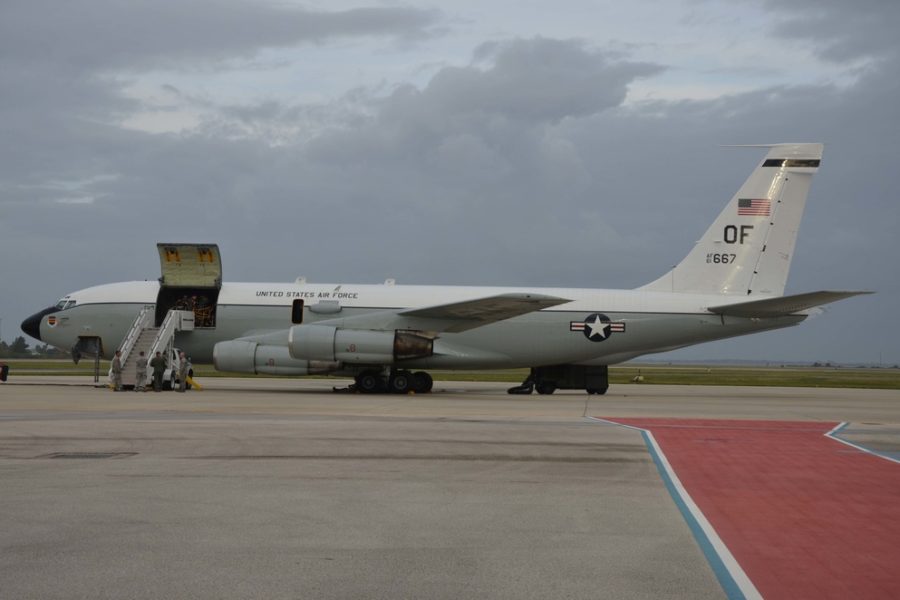WC-135’s mission is nuclear test monitoring, airborne radiological sampling, and arms control treaty verification. The KC-135R-based aircraft is equipped with air sampling and collection equipment and primarily supports monitoring under the 1963 Limited Nuclear Test Ban Treaty.
Air sampling WB-29s detected debris from the Soviet Union’s first atomic test in 1949, and subsequent aircraft have monitored weapons tests in North Korea, as well as the Chernobyl and Fukushima nuclear disasters. The original fleet of modified C-135Bs was delivered between 1965 and 1996 and was fully retired in 2022 with delivery of the first modernized WC-135R.

The WC135R features modernized glass cockpits and uprated CFM-56 turbofans (common with the KC-135 fleet) which significantly improve the aircraft’s range, service ceiling, performance, and maintainability. Constant Phoenix’ sampling and collection suite allows mission crew to detect radioactive “clouds” in real time.
The collection system uses external flow-through devices to collect particles on filter paper for later analysis. The podded particulate sampler/Radiation Monitoring and Analysis System (RMAS) detects radiation contact, and the Directional Gamma Sensor System (DGSS) guides the crew toward the plume for collection. The Whole Air Collection System (WACS) captures and stores radioactive samples from the aircraft’s bleed-air system. An integrated control system permits realtime mission system interface and monitors internal and external radiation levels for safety and analysis.
L3 Technologies completed retrofit and redelivery of the first modernized WC-135R Constant Phoenix on July 11, 2022, followed by a second aircraft on May 11, 2023. The third and final aircraft was delivered to Offutt on Dec. 4, 2023.
WC-135Rs conducted rare air sampling missions over the CENTCOM area of operations in late 2024 in addition to more routine operations worldwide.
WC-135 Constant Phoenix Technical Data
Contractor: Boeing.
First Flight: June, 2022.
Delivered: July 11, 2022 - Dec 4, 2023.
IOC: December 1965; 2022 (WC-135R) planned.
Production: Two (WC-135C/W); three (WC-135R) (planned).
Inventory: Three (WC-135R).
Operator: ACC.
Aircraft Location: Offutt AFB, Neb.
Active Variants: •WC-135C. Modified EC-135C equipped for radiological monitoring and air sampling. •WC-135R. Modified KC-135R tankers, planned to replace the aging WC135C/W fleet. •WC-135W. Modified C-135B equipped for radiological monitoring and air sampling.
Dimensions: Span 130.8 ft, length 136.3 ft, height 41.7 ft.
Weight: Max T-O 300,500 lb. (WC-135C/W); 322,500 lb. (WC-135R).
Power Plant: Four Pratt & Whitney TF33-P-5 turbofans, each 16,050 lb thrust. (WC-135C/W); Four CFM International CFM56-2 turbofans, each 21,634 lb thrust (WC-135R).
Performance: Speed 403 mph, range 4,600 miles (farther with air refueling) (WC-135C/W); speed 530 mph, range approx. 3,900 miles (farther with air refueling) (WC-135R).
Ceiling: 40,000 ft. (WC-135C/W); 50,000 ft. (WC-135R).
Accommodation: Two pilots, navigator, up to 31 special equipment operators/observers as required.


